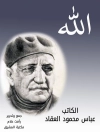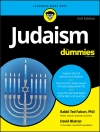Delve into a world of passion, philosophy, and profound understanding of human relationships with the 'Kama Sutra, ’ an anthology masterfully capturing the timeless narrative of love and erotica. This collection, edited with precision and care, navigates the delicate interplay of spirituality and sensuality, presenting readers with a diverse tapestry of literary styles ranging from poetic reveries to pragmatic expositions. As a seminal piece in world literature, the 'Kama Sutra’ transcends mere instruction and emerges as a holistic treatise in pursuit of happiness, offering insights that resonate across time and cultures. The authors, Vatsyayana and Richard Francis Burton, infuse the anthology with their rich cultural and historical contexts. Vatsyayana, a sage from ancient India, articulates the philosophical foundations of human relationships, while Burton, a renowned British explorer and linguist, provides a Western lens, bridging cultures and enhancing accessibility. Together, these authors weave a narrative that encapsulates the evolutionary discourse of intimacy within the societal constructs of their respective eras, making the anthology not just a literary venture, but a cultural dialogue that explores the ethos of human connectivity. This anthology is a compelling recommendation for anyone eager to explore a multitude of perspectives and styles in one volume, providing more than mere intellectual entertainment. It serves as an educational odyssey, enriching the reader’s understanding of personal and interpersonal dynamics while fostering a multifaceted dialogue between its varied voices. A journey through the 'Kama Sutra’ is not only an exploration of ancient wisdom but also a reflective engagement with enduring human themes, making it an indispensable addition to any literary exploration of love and desire.
O autorze
Vatsyayana, an ancient Indian philosopher and writer, is often known primarily for his authorship of the Kama Sutra, an extensive text about the art of living well, encompassing aspects of love, relationships, and pleasure. Vatsyayana supposedly lived during the Gupta period, around the 3rd century CE, a time known for its significant developments in culture, science, and political power — a period often referred to as the Golden Age of India. Unfortunately, little is known about Vatsyayana’s life, as scholarly tradition in India often focused more on the teachings and ideas presented than the biography of the teacher himself. The Kama Sutra, his notable composition, is a treatise on kama — one of the four goals of Hindu life, meaning desire, sensual pleasure, or sexual love. The text is structured into seven parts, each discussing different aspects of pleasure and love, ranging from social life, courtship, and marriage to sexual techniques and behaviors. Often misunderstood in modern times to be merely a sex manual, the Kama Sutra, in its essence, is a guide to a virtuous and gracious living that discusses the nature of love, family life, and other aspects pertaining to pleasure-oriented faculties of human life. Vatsyayana’s work is remarkable for its analytical approach to human relations and its candid discussion of intimate matters in a philosophical context. His contribution to literature and overall cultural perceptions of sexuality and relationships is immense and continues to be studied and revered for its depth and insight into human comportment and instincts.












